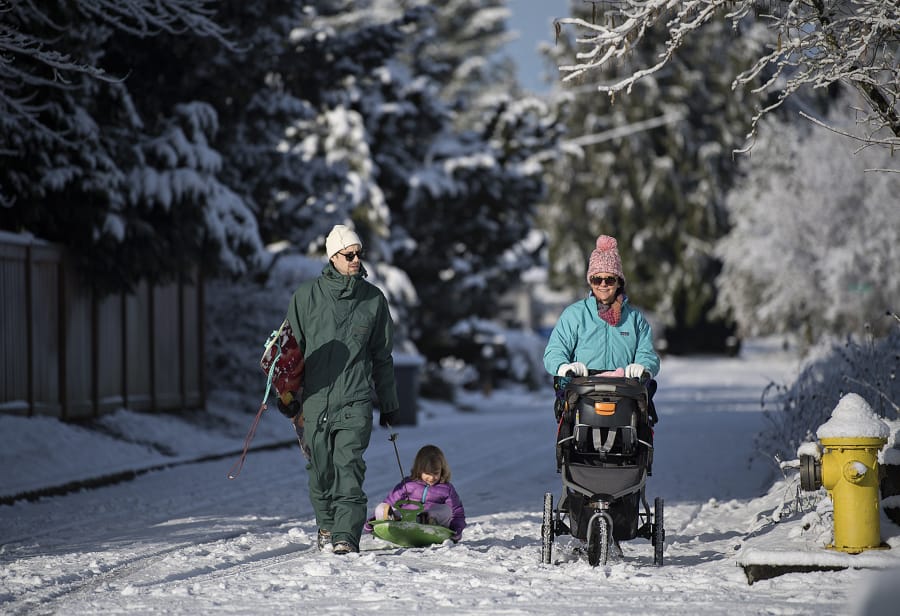In terms of accumulation, this winter got off to a clunky start in Southwest Washington, but the big storms that clobbered the Pacific Northwest around Presidents Day and through the rest of last month substantially boosted the region’s snowpack and brought a bit of relief to those thinking about this summer’s water supply.
At the beginning of this winter, precipitation levels were near normal, but a few particularly balmy stretches caused snowpack levels at higher elevations to lag behind. In mid-January the Lower Columbia Basin’s snowpack was just 70 percent of average. A few storms boosted that to 87 percent in mid-February. When Winter Storm Oliver hit the nation late last month, it brought to the Pacific Northwest some much-needed snow in a brief period of time.
As of March 2, the region’s snowpack was 101 percent of normal.
“We got the nice couple systems that passed through,” said David Bishop, a meteorologist at the National Weather Service.
Over the past week, Mount Hood gained a little over 7 inches of snow water equivalent on the Oregon side of the Columbia River, which is included in the Lower Columbia Basin. In terms of snow depth, the mountain gained 25 inches of snow between Feb. 23 and Feb. 25. As of Friday, the mountain had 116 inches of snow.




